It’s been quite a few years since the global onslaught of SUVs began. Needless to say, it’s become increasingly difficult to see the point of hatchbacks and sedans; at least for some out there. Yet, the mid-size premium sedan segment, the likes of which include the Honda City, Hyundai Verna and Maruti Suzuki Ciaz, still soldiers on. Even in the face of adversity from the equivalent SUV segment, which includes the Hyundai Creta, Kia Seltos, Volkswagen Taigun, Skoda Kushaq, MG Astor and a few others. To make things a lot more interesting, there’s a new player in town. [caption id=“attachment_10639551” align=“alignnone” width=“640”]
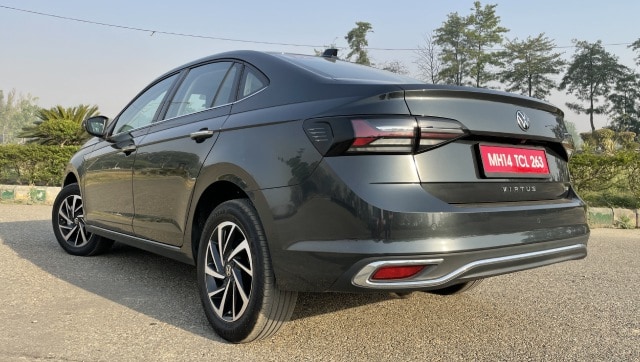 Volkswagen Virtus. (Image: Abhinav Jakhar/Firstpost)[/caption] Volkswagen’s equivalent of the Slavia (or maybe it’s the other way around?) - Virtus. On paper at least, there doesn’t seem to be much of a difference between the Slavia and Virtus. They’re both built on the same MQB-AI platform, have almost identical specifications and on the face of it, pretty much have the same features as well. However, the biggest difference between the two siblings has to be the design language. So, let’s start with that then? How does it look? I have to admit, it was rather sad to hear that after 12 years of being sold in India, the Polo will finally be leaving the market soon. But, as soon as I saw the Volkswagen Virtus for the first time in the flesh, I had a hopeful smile on my face. That’s because VW purists will love the way the Virtus looks from any angle. From the front, it gives off an almost Jetta or Golf-like vibe while the sides and the rear are simple, contained and classy. Once again, it’s all clean lines and a no-nonsense approach from the Germans, and I am not ashamed to say, I am a pretty big fan of it. [caption id=“attachment_10639611” align=“alignnone” width=“640”]
Volkswagen Virtus. (Image: Abhinav Jakhar/Firstpost)[/caption] Volkswagen’s equivalent of the Slavia (or maybe it’s the other way around?) - Virtus. On paper at least, there doesn’t seem to be much of a difference between the Slavia and Virtus. They’re both built on the same MQB-AI platform, have almost identical specifications and on the face of it, pretty much have the same features as well. However, the biggest difference between the two siblings has to be the design language. So, let’s start with that then? How does it look? I have to admit, it was rather sad to hear that after 12 years of being sold in India, the Polo will finally be leaving the market soon. But, as soon as I saw the Volkswagen Virtus for the first time in the flesh, I had a hopeful smile on my face. That’s because VW purists will love the way the Virtus looks from any angle. From the front, it gives off an almost Jetta or Golf-like vibe while the sides and the rear are simple, contained and classy. Once again, it’s all clean lines and a no-nonsense approach from the Germans, and I am not ashamed to say, I am a pretty big fan of it. [caption id=“attachment_10639611” align=“alignnone” width=“640”]
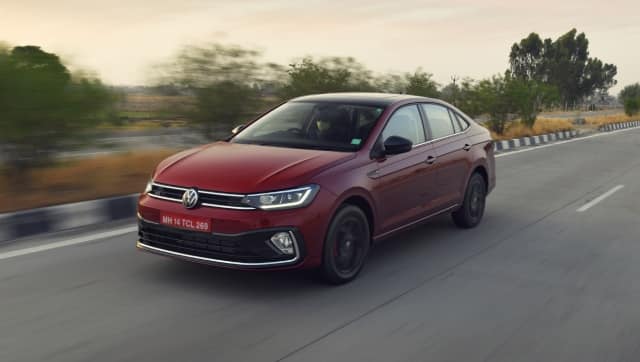 Volkswagen Virtus. (Image: Volkswagen India)[/caption] However, if I did have to nitpick, I’d say that the Virtus could have done with slightly bigger tyres. From purely a visual standpoint, it does look like the wheel arches can house fatter rubber. And, that’s about it, really. I think Volkswagen has done a stellar job with the Virtus, especially when you consider the fact that many Polo owners will look at the Virtus as a natural progression if they don’t fancy the SUV route with the Taigun. Just so you know, the Virtus finished in Carbon Steel Grey is the ‘Dynamic’ line, while the Wild Cherry Red one with the black alloy wheels is the famed ‘GT or Performance’ line. If those don’t take your fancy, there are four other colours to choose from as well. Both have minor and subtle differences when it comes to design, but, there’s another major we will get to a little later. Is it well equipped? [caption id=“attachment_10639561” align=“alignnone” width=“640”]
Volkswagen Virtus. (Image: Volkswagen India)[/caption] However, if I did have to nitpick, I’d say that the Virtus could have done with slightly bigger tyres. From purely a visual standpoint, it does look like the wheel arches can house fatter rubber. And, that’s about it, really. I think Volkswagen has done a stellar job with the Virtus, especially when you consider the fact that many Polo owners will look at the Virtus as a natural progression if they don’t fancy the SUV route with the Taigun. Just so you know, the Virtus finished in Carbon Steel Grey is the ‘Dynamic’ line, while the Wild Cherry Red one with the black alloy wheels is the famed ‘GT or Performance’ line. If those don’t take your fancy, there are four other colours to choose from as well. Both have minor and subtle differences when it comes to design, but, there’s another major we will get to a little later. Is it well equipped? [caption id=“attachment_10639561” align=“alignnone” width=“640”]
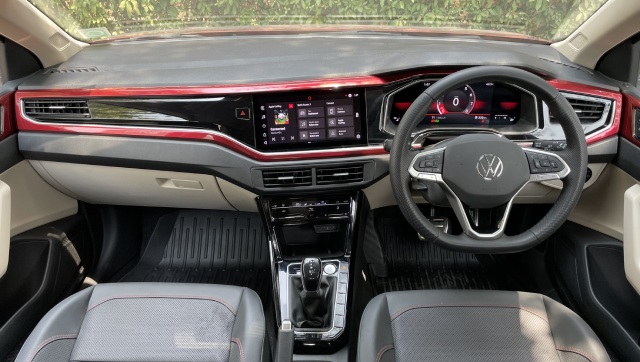 Volkswagen Virtus. (Image: Abhinav Jakhar/Firstpost)[/caption] So, how well equipped is the brand new Virtus? Rather well, to be honest. At least enough to keep up with its rivals. It’s got cooled seats for the front row which works like a charm in the blistering heat. It’s equipped with a wireless charger and two type-C ports. It’s got the same (slightly fiddly) controls for the air conditioner as the Slavia but the dashboard at a whole better rounded off. [caption id=“attachment_10639791” align=“alignnone” width=“640”]
Volkswagen Virtus. (Image: Abhinav Jakhar/Firstpost)[/caption] So, how well equipped is the brand new Virtus? Rather well, to be honest. At least enough to keep up with its rivals. It’s got cooled seats for the front row which works like a charm in the blistering heat. It’s equipped with a wireless charger and two type-C ports. It’s got the same (slightly fiddly) controls for the air conditioner as the Slavia but the dashboard at a whole better rounded off. [caption id=“attachment_10639791” align=“alignnone” width=“640”]
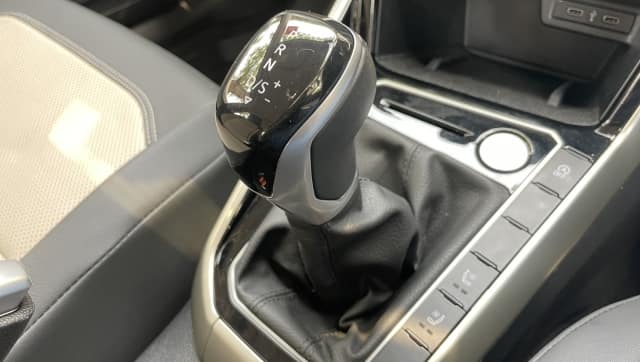 Volkswagen Virtus. (Image: Abhinav Jakhar/Firstpost)[/caption] For example, the nine-inch touchscreen infotainment system is housed within the dashboard rather than being a separate part like in the Slavia. That’s not to say the Virtus trumps the Slavia, but takes a whole different approach to the same idea. [caption id=“attachment_10639581” align=“alignnone” width=“640”]
Volkswagen Virtus. (Image: Abhinav Jakhar/Firstpost)[/caption] For example, the nine-inch touchscreen infotainment system is housed within the dashboard rather than being a separate part like in the Slavia. That’s not to say the Virtus trumps the Slavia, but takes a whole different approach to the same idea. [caption id=“attachment_10639581” align=“alignnone” width=“640”]
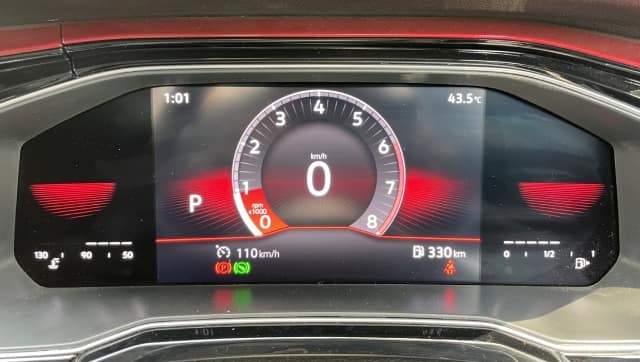 Volkswagen Virtus. (Image: Abhinav Jakhar/Firstpost)[/caption] Another thing that Volkswagen made clear is that Virtus is the longest and widest car in its segment. It’s also got the biggest boot space and the longest wheelbase as well. One other figure that is to be noted is the ground clearance, which stands at 179mm, which is immense for a sedan! The rear legroom is more than generous and the headroom is pretty decent as well. [caption id=“attachment_10639571” align=“alignnone” width=“640”]
Volkswagen Virtus. (Image: Abhinav Jakhar/Firstpost)[/caption] Another thing that Volkswagen made clear is that Virtus is the longest and widest car in its segment. It’s also got the biggest boot space and the longest wheelbase as well. One other figure that is to be noted is the ground clearance, which stands at 179mm, which is immense for a sedan! The rear legroom is more than generous and the headroom is pretty decent as well. [caption id=“attachment_10639571” align=“alignnone” width=“640”]
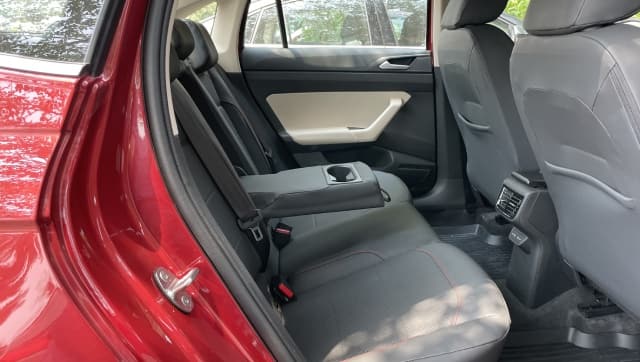 Volkswagen Virtus. (Image: Abhinav Jakhar/Firstpost)[/caption] Then there is the rear AC vent along with two Type-C ports, and a centre armrest for good measure. So, as far as equipment levels go, the Virtus is pretty well sorted as well. But, what about the most important question of them all? What’s it like to drive? Let’s talk about the engines first. It gets the 1.0-litre, three-cylinder, TSI engine which produces 110PS of power and 178Nm of torque. This is with the aforementioned Dynamic line. Then, there’s the more powerful 1.5-litre, four-cylinder, TSI motor with produces 150PS of peak power and 250Nm of torque. On our drive from the beautiful city of Amritsar to Faridkot and back, we tested both models albeit in their automatic guise. So, the smaller TSI engine comes with a six-speed torque converter, while the bigger one gets the seven-speed DSG. VW will also offer the 999cc turbo-petrol engine with a six-speed manual. But, unlike the Slavia, the 1.5-litre-equipped Virtus might not get a manual, just yet. [caption id=“attachment_10639601” align=“alignnone” width=“640”]
Volkswagen Virtus. (Image: Abhinav Jakhar/Firstpost)[/caption] Then there is the rear AC vent along with two Type-C ports, and a centre armrest for good measure. So, as far as equipment levels go, the Virtus is pretty well sorted as well. But, what about the most important question of them all? What’s it like to drive? Let’s talk about the engines first. It gets the 1.0-litre, three-cylinder, TSI engine which produces 110PS of power and 178Nm of torque. This is with the aforementioned Dynamic line. Then, there’s the more powerful 1.5-litre, four-cylinder, TSI motor with produces 150PS of peak power and 250Nm of torque. On our drive from the beautiful city of Amritsar to Faridkot and back, we tested both models albeit in their automatic guise. So, the smaller TSI engine comes with a six-speed torque converter, while the bigger one gets the seven-speed DSG. VW will also offer the 999cc turbo-petrol engine with a six-speed manual. But, unlike the Slavia, the 1.5-litre-equipped Virtus might not get a manual, just yet. [caption id=“attachment_10639601” align=“alignnone” width=“640”]
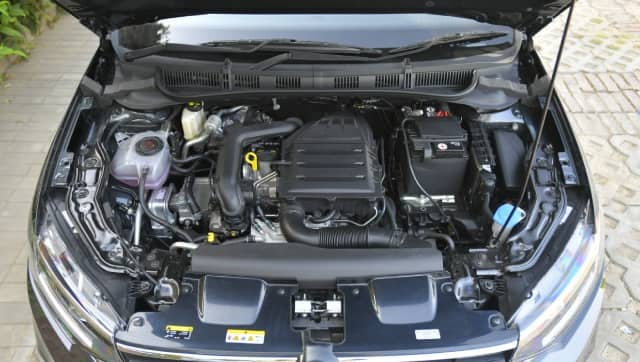 Volkswagen Virtus with 1.0-litre TSI motor. (Image: Volkswagen India)[/caption] Since we tested it first, let’s start with the 1.0-litre variant. This little TSI motor is up to the task for anything you can through at it on a day-to-day basis. It loves being revved to the limit and feels quiet and composed on highway and city runs. Sure, there’s a slight three-cylinder thrum but it’s very well contained, indeed. Even with the relatively smaller engine, the Virtus will sit at 120 km/hr with aplomb. In fact, fuel economy isn’t too bad either. If one does use a light foot and stays away from engaging the massively addictive kick from the turbocharger, the Virtus sips fuel rather cautiously but don’t expect it to challenge the might of the Maruti Suzuki’s and Hyundai’s of the world in that sphere. However, one area it trumps its rivals is handling. Although we did not encounter a lot of tight bends, the Virtus feel incredibly stable, planted and eager to turn into whatever corners we did come across in our journey. [caption id=“attachment_10639591” align=“alignnone” width=“640”]
Volkswagen Virtus with 1.0-litre TSI motor. (Image: Volkswagen India)[/caption] Since we tested it first, let’s start with the 1.0-litre variant. This little TSI motor is up to the task for anything you can through at it on a day-to-day basis. It loves being revved to the limit and feels quiet and composed on highway and city runs. Sure, there’s a slight three-cylinder thrum but it’s very well contained, indeed. Even with the relatively smaller engine, the Virtus will sit at 120 km/hr with aplomb. In fact, fuel economy isn’t too bad either. If one does use a light foot and stays away from engaging the massively addictive kick from the turbocharger, the Virtus sips fuel rather cautiously but don’t expect it to challenge the might of the Maruti Suzuki’s and Hyundai’s of the world in that sphere. However, one area it trumps its rivals is handling. Although we did not encounter a lot of tight bends, the Virtus feel incredibly stable, planted and eager to turn into whatever corners we did come across in our journey. [caption id=“attachment_10639591” align=“alignnone” width=“640”]
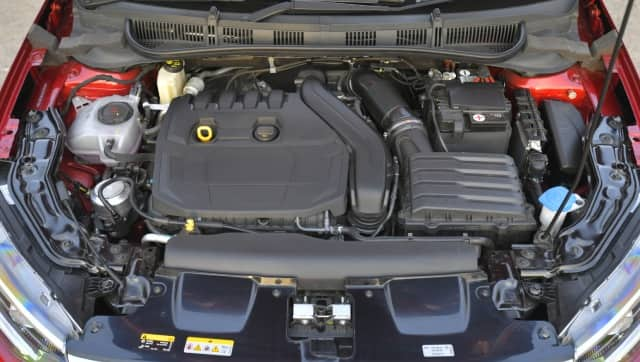 Volkswagen Virtus with 1.5-litre TSI motor. (Image: Volkswagen India)[/caption] Then, of course, there’s the 1,498cc motor, which has a blistering amount of push on the go. Put your foot down and other cars seemingly disappear into a little spec in the rear-view mirror. The GT line also looks and feels a lot sportier thanks to a heavier front end and subtle changes to certain design-based elements around the car. Where the 1.0-litre feels slightly more light and nimble, and 1.5-litre feels slightly old school. But, it’s clever technology like the two-cylinder deactivation, which really does help in saving some fuel out on the highway. FYI, the claimed fuel efficiency figure for the manual is 19.40 km/l, 18.12 km/l for the automatic (999cc) and 18.67 km/l for the 1.5-litre. So, what’s the best way to sum it all up then? Should I buy one? If I had to be real quick, I’d use the word ‘balanced’ to describe the Virtus. It puts together ride comfort, performance and space in a nice looking package for the driving enthusiast of today. After the recent success of the Volkswagen Taigun, which has been nominated for and won a number of prestigious motoring awards, the SUV only seems to be surging ahead in the minds of many. [caption id=“attachment_10639631” align=“alignnone” width=“640”]
Volkswagen Virtus with 1.5-litre TSI motor. (Image: Volkswagen India)[/caption] Then, of course, there’s the 1,498cc motor, which has a blistering amount of push on the go. Put your foot down and other cars seemingly disappear into a little spec in the rear-view mirror. The GT line also looks and feels a lot sportier thanks to a heavier front end and subtle changes to certain design-based elements around the car. Where the 1.0-litre feels slightly more light and nimble, and 1.5-litre feels slightly old school. But, it’s clever technology like the two-cylinder deactivation, which really does help in saving some fuel out on the highway. FYI, the claimed fuel efficiency figure for the manual is 19.40 km/l, 18.12 km/l for the automatic (999cc) and 18.67 km/l for the 1.5-litre. So, what’s the best way to sum it all up then? Should I buy one? If I had to be real quick, I’d use the word ‘balanced’ to describe the Virtus. It puts together ride comfort, performance and space in a nice looking package for the driving enthusiast of today. After the recent success of the Volkswagen Taigun, which has been nominated for and won a number of prestigious motoring awards, the SUV only seems to be surging ahead in the minds of many. [caption id=“attachment_10639631” align=“alignnone” width=“640”]
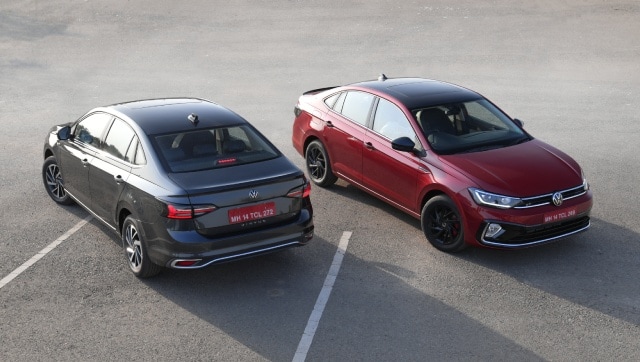 Volkswagen Virtus. (Image: Volkswagen India)[/caption] To be honest, I feel the Volkswagen Virtus will not only be a great step up for anyone with a Polo but, will also be a great alternative for anyone not looking to go the SUV way. All that remains now is to wait till the Virtus is officially launched in the Indian market. Just like the Taigun, it could carry a slight premium over its sibling (Slavia) and have some additional features as well. If priced well, VW could have another hit on their hands.
Volkswagen Virtus. (Image: Volkswagen India)[/caption] To be honest, I feel the Volkswagen Virtus will not only be a great step up for anyone with a Polo but, will also be a great alternative for anyone not looking to go the SUV way. All that remains now is to wait till the Virtus is officially launched in the Indian market. Just like the Taigun, it could carry a slight premium over its sibling (Slavia) and have some additional features as well. If priced well, VW could have another hit on their hands.
Volkswagen Virtus - First drive review: Move on up!
Abhinav Jakhar
• May 6, 2022, 10:42:36 IST
Can the Volkswagen Virtus be a successor to the Vento, elder sibling to the Polo and a worthy alternative to the Taigun? We find out!
Advertisement
)
End of Article